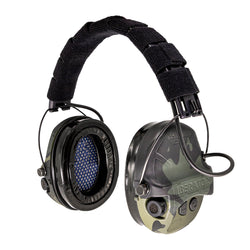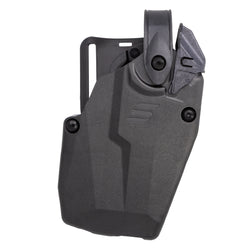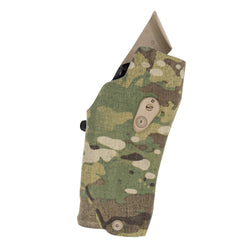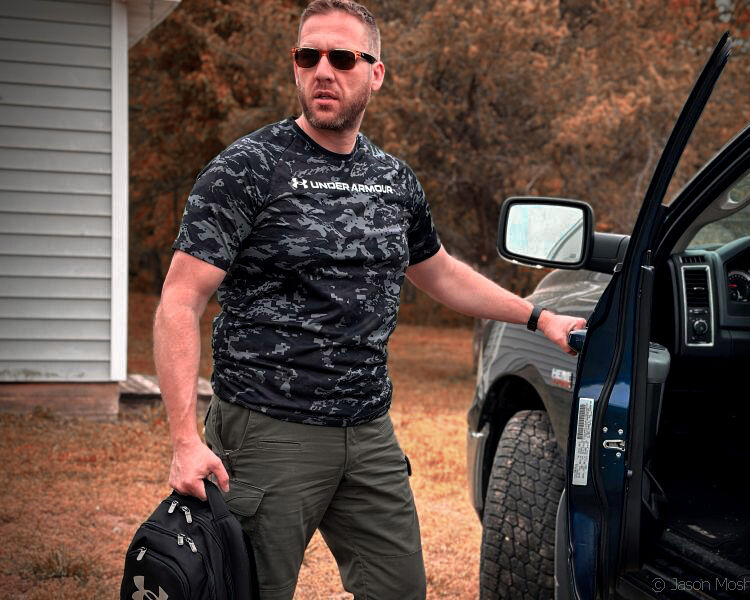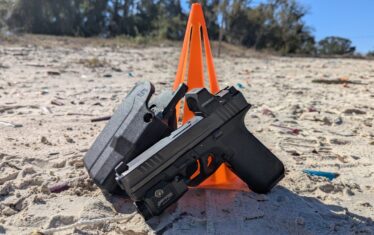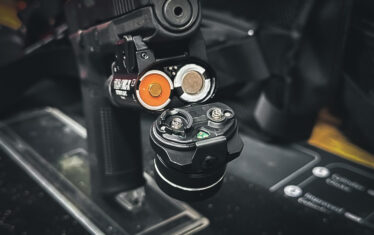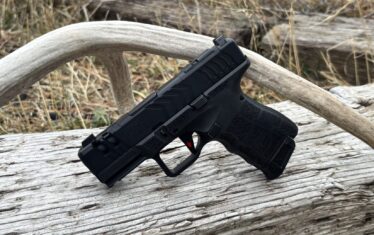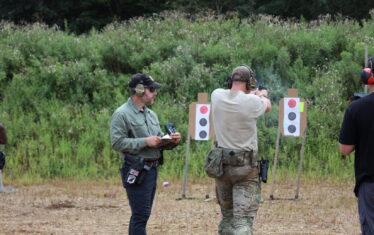You’ve got your favorite concealed carry handgun tucked safely in your IWB holster, and you practice regularly. You should be good to go, right?
If you have mastered a quick draw and are proficient with your handgun, hats off to you; that’s a lot of work. But one thing we often overlook in self-defense preparedness is your mindset.
Everyday Carry (EDC) is far more than just what’s on your hip. It’s a 24/7 commitment to building a defensive lifestyle. Your most critical piece of equipment isn’t made of Kydex or steel. It’s your brain, the most capable survival tool you have. Like any tool, it needs practice and training.
This article isn’t about paranoia; it’s about empowerment and making proactive safety habits second nature. We call this “situational awareness,” and it starts with sharp awareness, followed by quick, proactive thinking.
The “Why” of Situational Awareness: More Than Just a Gun
Carrying a firearm is a serious responsibility we must all accept. But your gun should never give you a false sense of security. Just because you have one tucked into your waistband doesn’t mean you are ready for the unknown.
Your firearm is a last-resort tool. Your first line of defense is your self-defense mindset, where true EDC preparedness begins and ends.
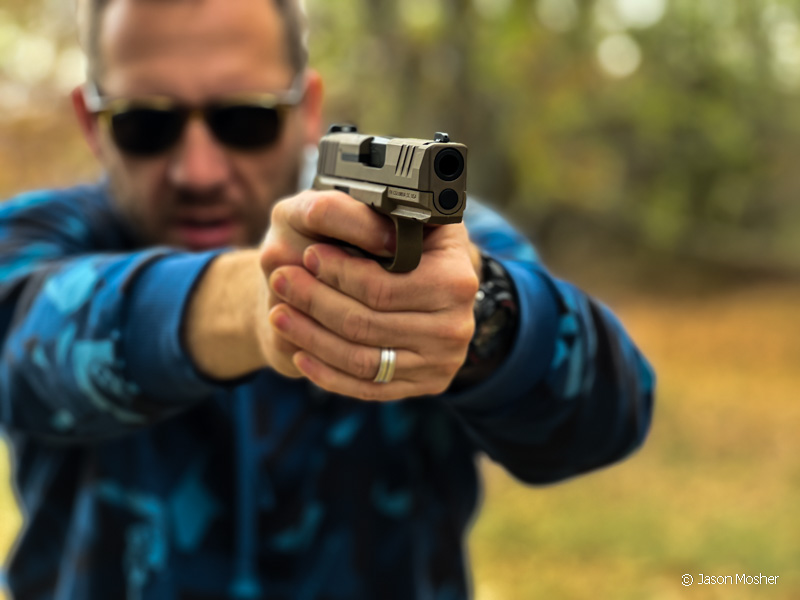
OODA LOOP
Have you heard of the OODA Loop? It stands for “Observe, Orient, Decide, Act.” It’s the decision-making cycle developed by military strategist John Boyd. Here, we’ll focus on the first two steps.
- Observe: taking in all information from your environment—what you see, hear, and feel.
- Orient: This is the most critical phase. You process that information based on your training and experience to understand what it means.
Vigilance is the constant practice of these two phases.
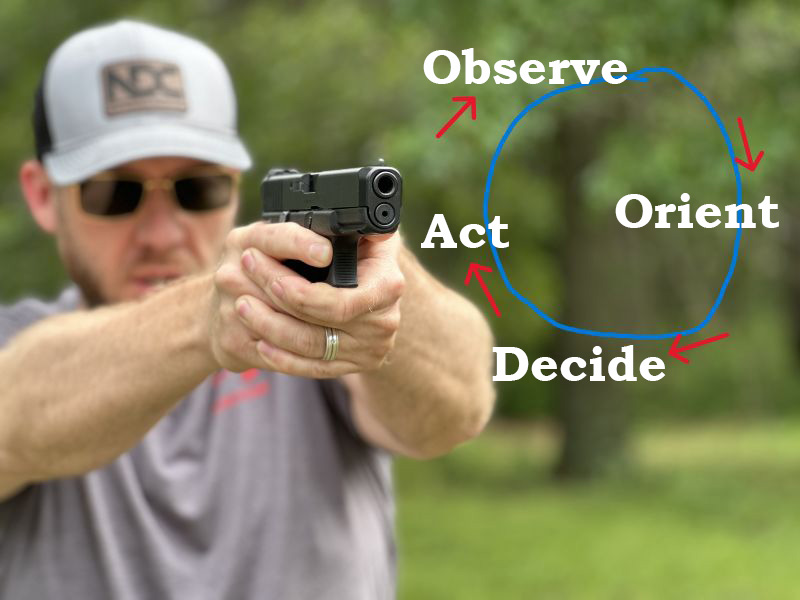
Complacency is a silent threat. It’s easy to get comfortable and neglect the training of our mindset for these important skills. We all do it because life gets busy. Phones grab our attention, routines become automatic, etc. But this comfort can create vulnerabilities that can turn you into a “soft target.”
Criminals seek easy prey, or as my old police instructor used to say, “the easiest route to crime.”
Building Skills with the Jeff Cooper Color Codes
Think of your awareness as a spectrum. Jeff Cooper’s “Color Codes” are a great guide. These color codes show the person’s “readiness” at a given time. Your level of readiness can change, so you want to pay attention to what level you are in.
Here are the color codes and what each level means:

When you enter a new space, take a moment to scan the room. Where are the exits? Are there more than one? Are there any choke points where people might get funneled? Where could you find cover if needed?
Glance at the people around you. Are there any unusual behaviors? Don’t overthink all of this and assume you need to stop and spend five minutes staring everyone down. A quick scan around the room takes a couple of seconds and provides critical information.

Maintaining awareness is ongoing. Watch for aggressive postures, nervous movements, or suspicious loitering — all potential pre-assault indicators. Listen to your gut. If something feels off, it probably is; your subconscious often detects cues before your conscious mind catches up.
The first time I went through this type of training at the police academy, I was a wreck stepping out into public afterward. My mind was overwhelmed with all my new information and what I should be looking for. At dinner that night, I was so focused on scanning the room that I missed everything happening at my own table. The goal is to build habits that allow you to remain aware without being hyper-focused or paranoid.
7 Practical Habits for Everyday Situational Awareness
Most practical habits we want to develop are common sense, but they only become effective when we train our brains to execute them automatically.
What I like to do is keep a list of things I should work on when I’m out and about. I review this list periodically to keep it fresh in my mind. The list includes the following practices for everyday vigilance:
1. Choose Strategic Seating
Keeping your back to the wall is a classic tactic for good reason. Sit where you can see the entire room, entrances, and exits (when possible). This gives you the advantage of seeing anyone who approaches.
I prefer seats close to an exit when possible. This is so I can have my family run for safety while I confront a threat, if needed. Also, I like to identify areas of cover. A fast glance is all it takes to identify potential locations.
2. Parking Lot & Walking Safety
Scan vehicles as you are parking and before you get out of your car. Do the same before you approach your vehicle when leaving. A quick 360-degree check takes mere seconds.
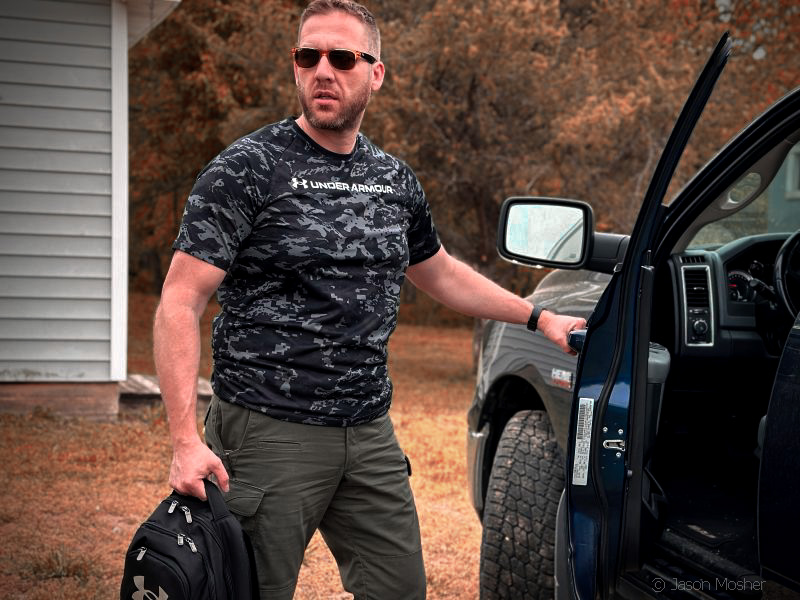
Walk with your head up; looking down at your phone or feet makes you a ‘soft target.’
3. Manage Digital Distractions
Your phone is the single greatest threat to your situational awareness. Prioritize your environment: check your surroundings before you check your phone.
Be mindful that someone could be lurking in dark areas. Again, you don’t have to be paranoid or scared, but being “ready” for anything gives you a much better chance at responding.
4. Watch for Repeated Contact
Be mindful of unusual behaviors. Have you heard of the “Rule of Threes?” If you pass the same car three times, or see the same person three times, it’s probably not a coincidence. Of course, there could be exceptions, but it’s another thing to keep in mind.
5. Stay Alert at ATMs and Gas Pumps
These areas present multiple opportunities for criminals. The ATM is where you pull all that cash from, right? This can be an easy place for thieves to lurk, waiting for someone to approach. Gas pumps are a hot spot because you get out of your car with your debit/credit card.
Do a quick scan as you approach these areas, check your surroundings with your mirrors, and stay aware while using them.
6. Practice Proactive Use of the OODA Loop
Regularly practice mental “What If” scenarios. If X happens, what is my best immediate course of action (Y)? This mentally rehearses the Decide and Act phases of the OODA Loop, which will drastically reduce hesitation in a real emergency.
One of my instructors used to sit quietly, like he was meditating, before each training day. If you asked him what he was doing, he would say, “I’m fighting bad guys in my head.”
7. Identifying Cover vs. Concealment
When scanning a new space (the Observe phase), quickly differentiate between objects that will hide you (Concealment, e.g., drywall or curtains) and objects that will stop bullets (Cover, e.g., concrete pillars, engine blocks). Knowing the nearest piece of hard cover is a critical skill for initiating your tactical response.
Responding When Something Feels Off
When you combine observational awareness with your training, you are more prepared to respond. If something feels off, don’t ignore it. Acknowledge it and take action. This might mean leaving a store or not parking your car where you intended.
Mentally walking through potential responses helps reduce hesitation in a real emergency. It builds muscle memory for the decision-making part of your brain.
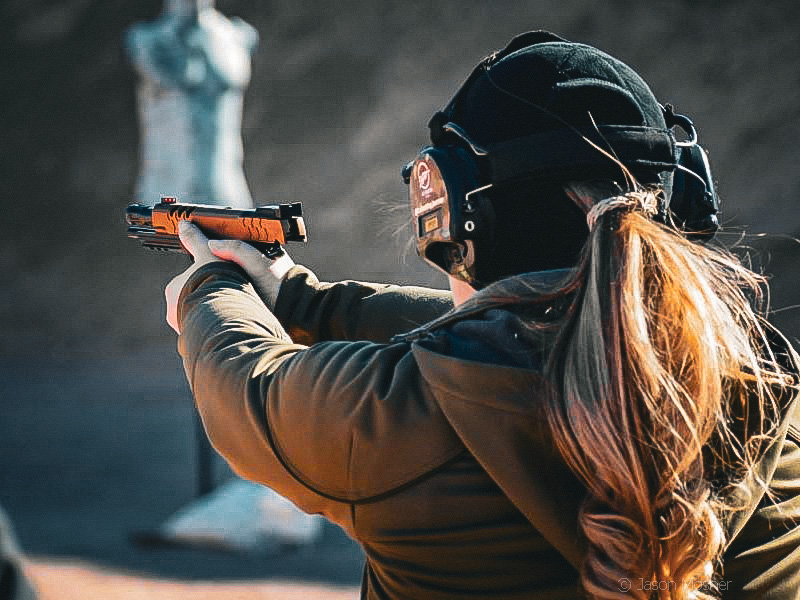
Stay Confident, alert, and ready
Awareness of your surroundings isn’t a burden; it’s an empowering skill. It makes you a harder target, boosts your confidence, and it provides true peace of mind.
Like any skill, vigilance improves with practice. Start small. Implement one new habit this week, and one next week. Practice until it becomes automatic, and then add another. This is a practice that will never end, but you get better as time goes on.
Train with your firearm, medical equipment, holster, and any other gear you carry daily. But don’t forget to train your mind, because it is the most important part of being prepared.


